Northern palace at Wat Phu
The 'palaces' at Wat Phu are the first serious structures you encounter as you visit this gorgeous temple, set on the lower slopes of a mountain in Southern Laos. There's no real reason to call them palaces but the word has stuck and they are long laterite and sandstone buildings, facing east and west with impressive gables, pediments and lintels, galleries and courtyards. Signs warn visitors to keep out but that didn't deter me on my recent visit as I sought to document the carvings in situ - afterall, it was my first visit to the site and who knows when I will return. The northern palace is documented here, its the most imposing and was built at the same time as Angkor Wat, in fact, there are many similarities with that temple. The northern structure has laterite in the body of the walls, whilst the southern palace is all sandstone, suggesting the builders ran out of the latter during construction. The lintels on show are all of a similar nature, on both palaces, with the minor god Vishvakarma sat on the head of a kala, who is eating the ends of a foliage branch. This, as I've explained before, is one of the most popular lintel renditions to be found in numerous temples. On a visit to Phnom Chisor a few months ago, I found no less than 23 lintels with this god at its core.
Vittorio Roveda describes him as the architect of the gods and of the universe. He's the master workman who sharpens the axe of Agni and forges the thunderbolts for Indra; he is a lord of the arts, executor of a thousand handicrafts, carpenter of the gods and fashioner of all ornaments. So, he's pretty important by the sounds of it. His attribute is a stick of command, the danda, or in some cases the measuring ruler. In the Ramayana epic, he's the supreme architect who builds the city of Lanka, as well as being the father of Nala who constructed the bridge between Lanka and the continent, allowing Rama to cross the sea and attack Ravana's city. Just in case you were interested!
Above the lintel on the blind eastern door is a triangular pediment featuring Umamahesvara - a very simple rendering of Shiva and Uma, his consort, riding the bull Nandin. The other pediments on show are less decorative and contain minor gods. I couldn't gain access to the western lintel and pediment because of the dense vegetation. Behind the southern palace is a building under reconstruction with the help of a team of experts from Italy and which is called the Nandin hall (the name of Shiva's sacred steed) or library.
Vittorio Roveda describes him as the architect of the gods and of the universe. He's the master workman who sharpens the axe of Agni and forges the thunderbolts for Indra; he is a lord of the arts, executor of a thousand handicrafts, carpenter of the gods and fashioner of all ornaments. So, he's pretty important by the sounds of it. His attribute is a stick of command, the danda, or in some cases the measuring ruler. In the Ramayana epic, he's the supreme architect who builds the city of Lanka, as well as being the father of Nala who constructed the bridge between Lanka and the continent, allowing Rama to cross the sea and attack Ravana's city. Just in case you were interested!
Above the lintel on the blind eastern door is a triangular pediment featuring Umamahesvara - a very simple rendering of Shiva and Uma, his consort, riding the bull Nandin. The other pediments on show are less decorative and contain minor gods. I couldn't gain access to the western lintel and pediment because of the dense vegetation. Behind the southern palace is a building under reconstruction with the help of a team of experts from Italy and which is called the Nandin hall (the name of Shiva's sacred steed) or library.
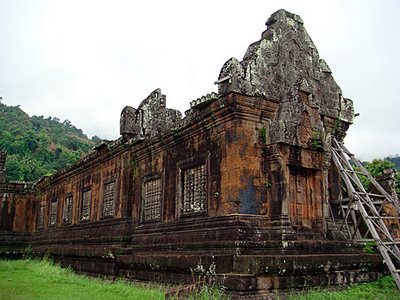
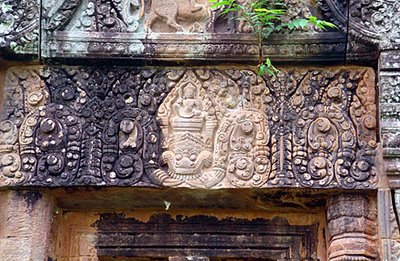
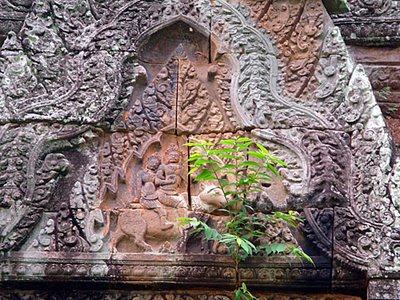
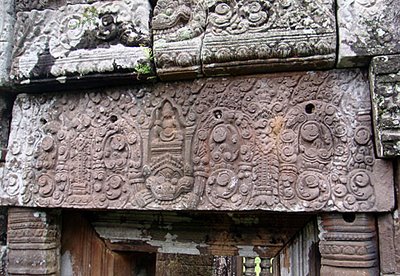
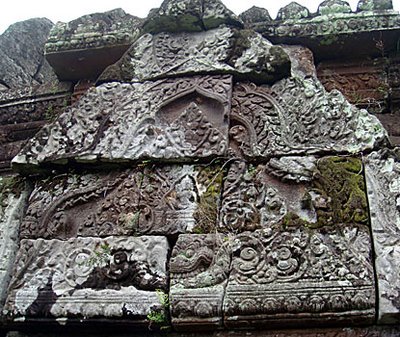
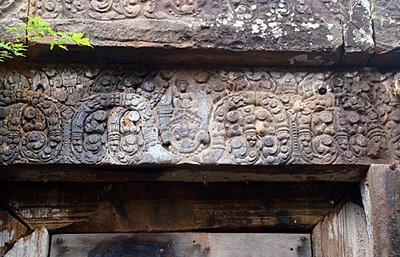
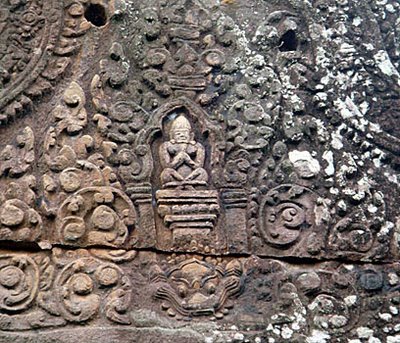
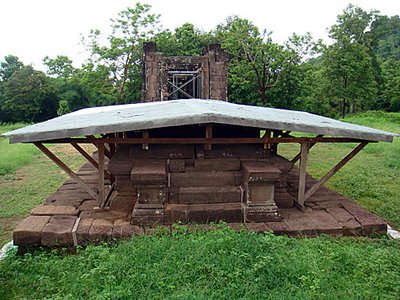


2 Comments:
Wow! I didn't know that there a Khmer temple there.
Would you mind telling me the location of this temple.
Thanks
thanks for a great post, Andy. you're in this week's rojak. =D
Post a Comment
<< Home